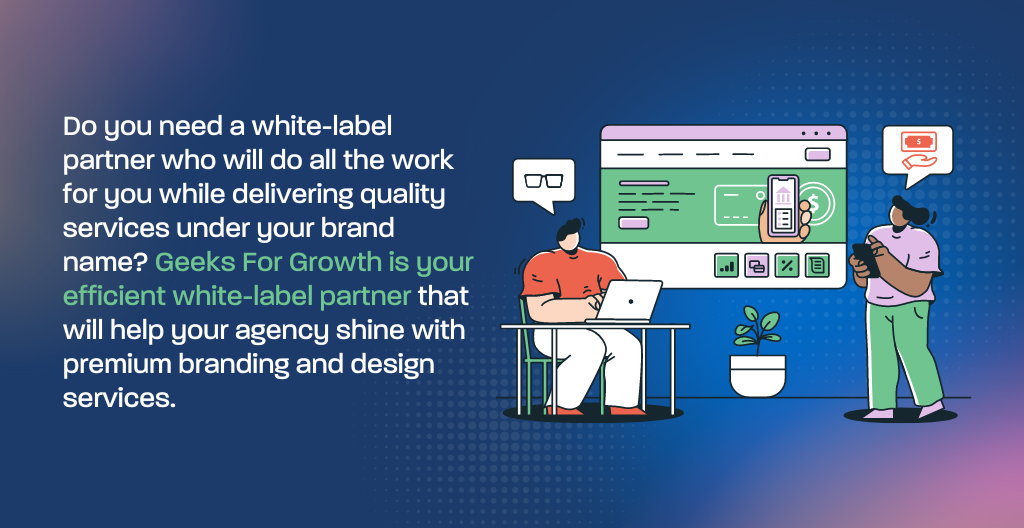Although white-label design partnerships have emerged as a strategic alliance for businesses seeking to expand their service offerings without significant investment, the success of a white-label partnership hinges on several critical factors that must be carefully considered.
Understanding the Foundation: Clear Communication and Mutual Understanding
Effective communication is the cornerstone of any successful partnership, and white-label collaborations are no exception. From the outset, both parties must establish open and transparent channels of communication to ensure alignment in goals, expectations, and project deliverables as this is a critical factor. A shared understanding of each other’s business models, target markets, and brand identities is essential for fostering a harmonious working relationship.
For instance, a design agency partnering with a white-label marketing firm should clearly articulate its design philosophy, target audience, and preferred design styles. Conversely, the marketing firm must convey its marketing strategies, target clientele, and branding guidelines. This mutual understanding serves as a foundation for creating cohesive and impactful campaigns.
Geeks For Growth has a free guide titled – A Guide to Successful white-label Partnerships which focuses on why agencies are increasingly turning to partners for design services, valuable insights into how these partnerships can be developed, and all you need to know before making the key decision to enter a white-label partnership with a partner like Geeks For Growth.
Defining the Partnership: Comprehensive Agreements
A well-structured agreement is indispensable for outlining the terms and conditions of a white-label partnership. This document defines the scope of services, roles, responsibilities, intellectual property rights, payment terms, and dispute resolution mechanisms. By addressing potential challenges upfront, partners can mitigate risks and build trust.
A white-label design agency agreement might include clauses about asset ownership, confidentiality obligations, and termination procedures. This ensures that both parties are protected and can focus on delivering exceptional results.
Maintaining Quality and Brand Consistency
Preserving the integrity of both brands is paramount in a white-label partnership. The white-label provider must adhere to the client company’s brand guidelines, ensuring that all deliverables align with the client’s visual identity and messaging. Conversely, the client company must efficiently maintain quality standards to protect the reputation of the partnership.
For instance, a white-label design agency providing design services must align the tone, style, and messaging of the design with the client’s brand voice. This consistency reinforces the client’s brand identity and builds trust with their target audience.
Strategic Benefits and Partner Selection
White-label partnerships offer numerous strategic advantages, including expanded service offerings, market penetration, and cost efficiency. By partnering with a specialized provider, companies can access expertise and resources that would be challenging to develop in-house.
Selecting the right partner is crucial for maximizing the benefits of a white-label collaboration. Compatibility in terms of business goals, values, and work ethics is essential for building a long-lasting and successful relationship. Conducting thorough due diligence, including assessing the partner’s portfolio, reputation, and client testimonials, is vital in making an informed decision.
Overcoming Challenges
While white-label partnerships offer significant opportunities, they also present potential challenges. Intellectual property concerns, market competition, and communication breakdowns can hinder the success of a collaboration. Partners must set guidelines for intellectual property, define competitive boundaries, and establish communication strategies to mitigate these risks.
A white-label design agency may require an NDA to protect client trade secrets and proprietary information. This helps to build trust and prevent intellectual property disputes.
Conclusion
A successful white-label partnership is built on critical factors such as a foundation of clear communication, mutual understanding, and a shared commitment to achieving common goals. By carefully selecting a partner, defining the terms of the collaboration, and maintaining quality and brand consistency, businesses can unlock the full potential of white-label arrangements. As the digital landscape continues to evolve, white-label partnerships will become increasingly important for driving growth and innovation.
Following key guidelines, your agency can form successful white-label partnerships that deliver exceptional value to partners and customers. To learn more about the benefits and long-term impact of white-label partnerships, the key factors in forming and sustaining partnerships, and how to strike the right balance between design, creativity, and client requirements, you can get GeeksForgrowth’s whitepaper for free!
Do you need a white-label partner who will do all the work for you while delivering quality services under your brand name? Geeks For Growth is your efficient white-label partner that will help your agency shine with premium branding and design services.




